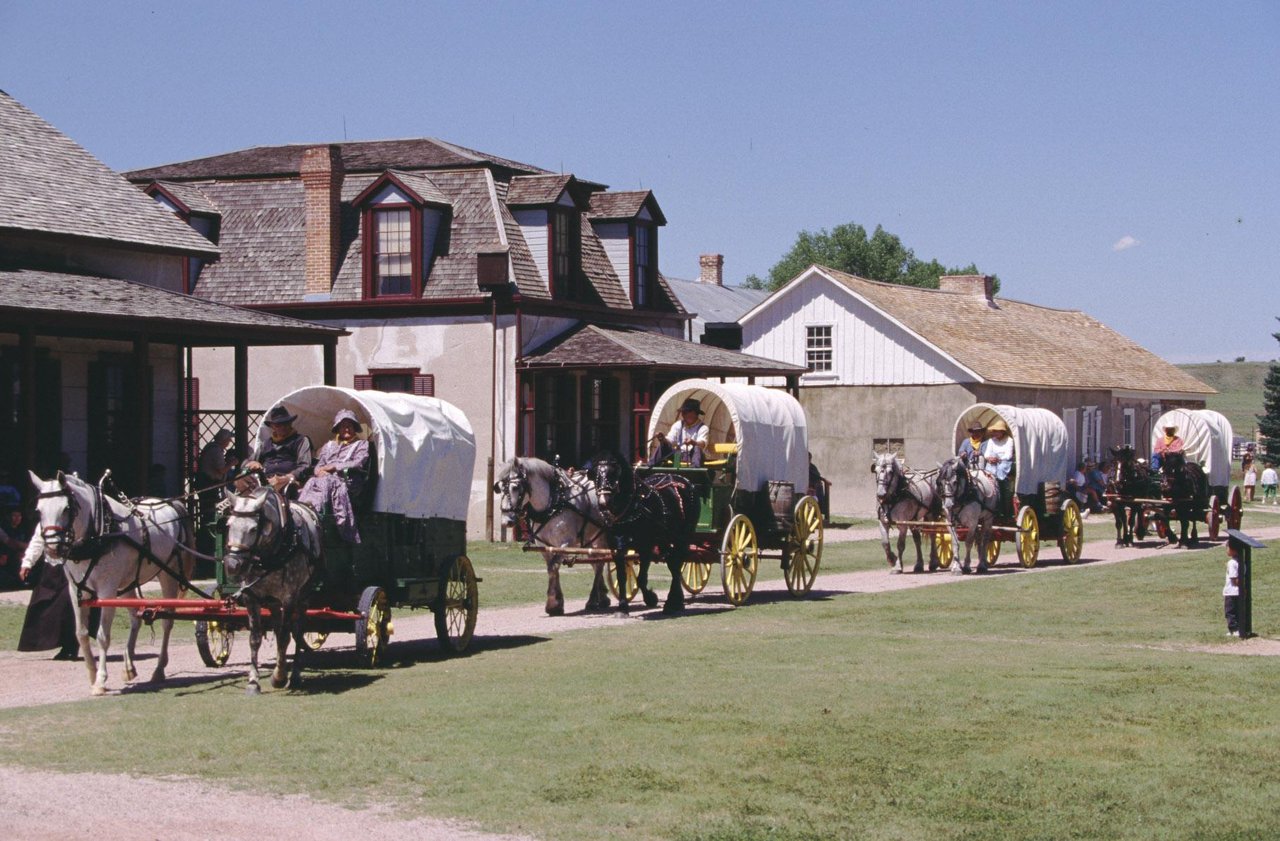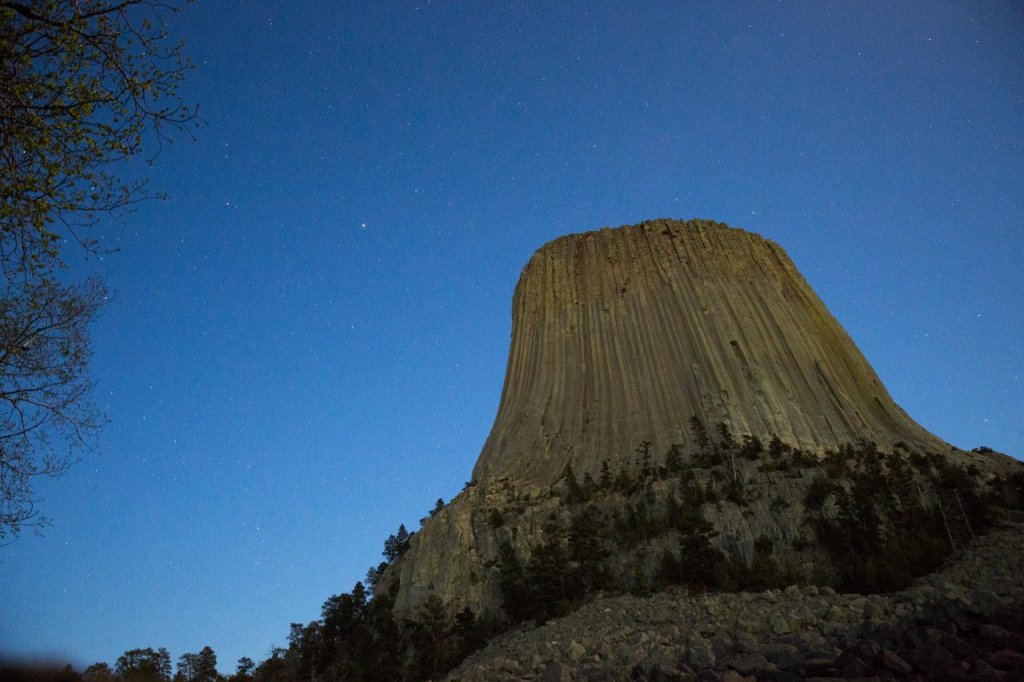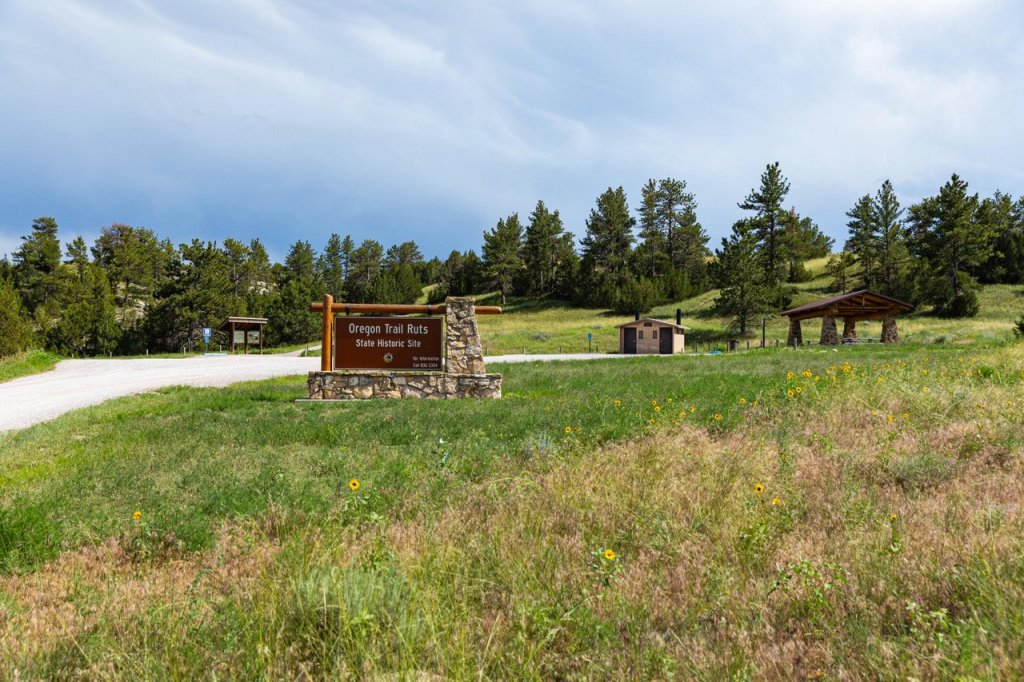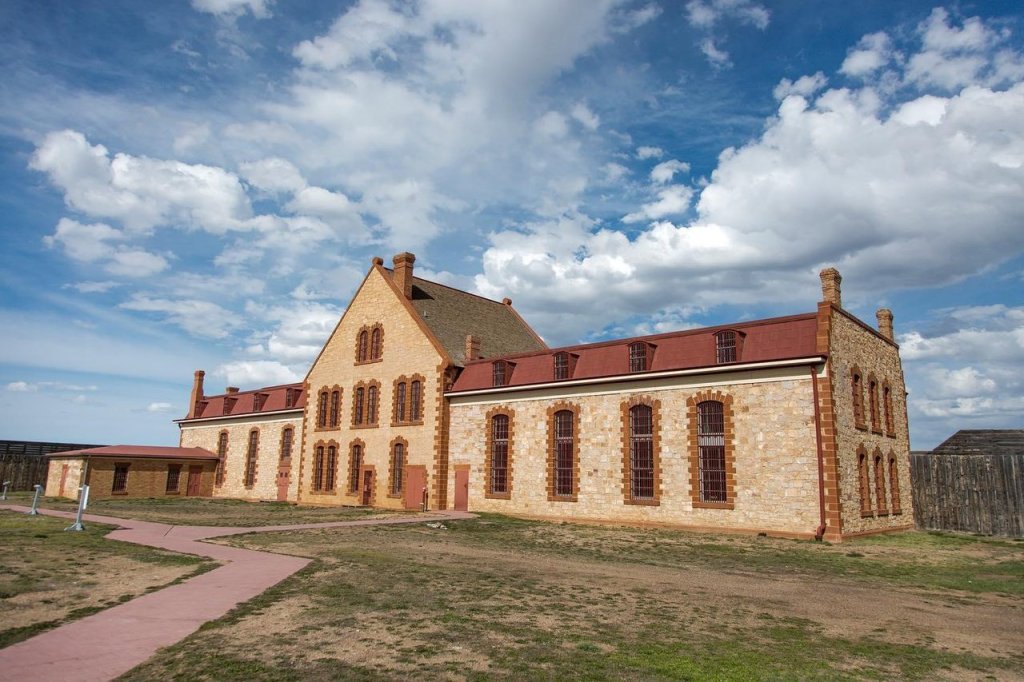
8 Historic Landmarks & Sites In Wyoming
Wyoming’s historic landmarks and sites promise a journey through some of the most pivotal chapters in the state’s—and nation’s—history. These meaningful destinations connect directly to Wyoming’s founding, early exploration, and settlement, offering insight into the people and events that shaped the land. Perfect for history buffs and family field trippers alike, each location is a portal to the past, offering moving stories, incredible architecture, and hands-on discovery.
As Aley Philp, Wyoming Historical Society Executive Director, puts it, “That is the best way to experience history—to immerse yourself in it. Wyoming is unique in that we can do that. You can touch it. You can see it. You can be part of it. That can really change people who haven’t experienced history before.”

Historical Sites in Wyoming
If you’ve ever wondered how many historic sites are in Wyoming, the answer is a whopping 500+ properties listed on the National Register of Historic Places. That said, Wyoming’s roots don’t just run deep—its history is embedded in the rugged landscapes and preserved places that witnessed its transformation from a vast territory to the 44th state in the Union. These historical sites in Wyoming served as the backdrop to pivotal moments in politics, law, and western expansion—each one helping to shape the character of the Equality State.
1. Wyoming State Capitol

The Wyoming State Capitol is where the story of statehood officially began after Wyoming joined the Union in 1890. As the heart of the state’s early political life, it set the stage for groundbreaking moments—most famously becoming the first state to grant women the right to vote. The bold legacy is visible throughout the Capitol’s stately halls, detailed murals, and restored 19th-century architecture.
The Equality State: Women’s History
When the Wyoming Territory made history in 1869 by becoming the first in the nation to grant women voting rights, it earned the nickname “The Equality State.” It’s thought that the granting of women’s suffrage may have been partly due to the low population. “We just didn’t have the population without the women to become a state,” Philp emphasizes.
The loneliness of the men may have also played a role. According to Nancy Tabb, a history archivist at the Johnson County Library, “There were hardly any women. It was kind of like a little jewel [they were presenting, saying] ‘if you marry me and move to Wyoming, you get to vote … The women who were here—they were strong. They wanted a voice. They knew that they were working just as hard beside their men, and they wanted their voice to be heard.”
This monumental move not only shaped the territory’s identity but also set a national precedent for women’s rights—echoing through its legislative halls to this day.
2. South Pass City
Tucked into the Wind River Mountains, South Pass City sprang up during the 1860s gold rush. Prospectors and merchants quickly turned it into one of the Wyoming Territory’s largest boomtowns. The town also holds a key place in the history of women’s rights— Esther Hobart Morris became the first woman in the U.S. to hold judicial office here in 1870. Visitors today can wander through preserved buildings, explore interpretive exhibits, and enjoy self-guided walking tours that bring this spirited gold rush town back to life.
3. Oregon Trail Ruts State Historic Site

The Oregon Trail Ruts State Historic Site preserves some of the deepest and most visible wagon wheel ruts left by 19th-century emigrants heading west. These sandstone grooves—etched into the hilltop by thousands of wagons—offer a powerful, tangible reminder of the epic journeys that defined westward expansion. Hundreds of thousands of pioneers passed through what is now Wyoming, carving a trail that helped establish further communities. “I think the most amazing thing is that our history is so hands-on,” elates Tabb. “You can walk in those ruts.” Interpretive signage at the site helps modern visitors imagine challenges faced by early travelers and connects them directly to the migration that laid the foundation for the state.
4. Fort Laramie National Historic Site
What began as a fur trading post in 1834 evolved into Fort Laramie, a cornerstone of military strategy and diplomacy in the Northern Plains. It offered protection for emigrants traveling the Oregon, California, and Mormon trails, while also serving as a location for critical treaty negotiations between the U.S. government and Native nations. Over the decades, Fort Laramie became a pivotal site for soldiers, trappers, settlers, and scouts alike, operating until its closure in 1890. Today, visitors can explore nine restored buildings that house museum exhibits, walk the Confluence Trail, and take part in guided tours that vividly resurrect its complex history.
Historic Landmarks In Wyoming
From military outposts to monumental expeditions, Wyoming’s historic landmarks reflect the ambition and resilience of a growing nation. During the territorial period, these places marked achievements in infrastructure, justice, and geographic discovery—laying the groundwork for the modern-day state.
5. Expedition Island
Aptly named, Expedition Island was the launch point for Major John Wesley Powell’s 1869 and 1871 expeditions through the Green and Colorado rivers. These daring journeys brought national attention to the uncharted West and provided invaluable geographic data. This was the first true scientific expedition in the region, and Powell’s reports helped shape Eastern public opinion about what this vast expanse actually was. “They were thinking it was probably all wooded,” Philp shares. “[His reports] fleshed out what it actually looked like … dispelled a lot of the myths, and [brought] more accuracy.” For Wyoming, Powell’s efforts underscored the state’s importance in mapping and exploring America’s wild frontier. Today, visitors can stroll along scenic riverside trails and read interpretive signs that honor this era of scientific adventure discovery.
6. The Cheyenne Depot Museum
A beacon of the railroad age, the Cheyenne Depot Museum, stands as a striking reminder of the transcontinental railroad’s impact on Wyoming. Built in 1886 by the Union Pacific Railroad, the station became a vital hub for transportation and communication, helping link the American frontier to eastern cities. This connection accelerated population growth and economic development—critical steps toward Wyoming’s eventual statehood. As the last grand depot still standing on the route, it remains a true icon among historic landmarks in Wyoming. Inside, rich exhibits of photographs and rare railroad artifacts bring the steam-powered era to life for tourists of all ages.
7. Wyoming Territorial Prison State Historic Site

Before Wyoming gained statehood, law and order were enforced at the Wyoming Territorial Prison, which operated from 1872 to 1903. The stone-and-brick structure housed over 1,000 inmates—including the notorious outlaw Butch Cassidy—and serves as a testament to frontier justice. In present times, visitors can walk through restored cell blocks, view museum exhibits on prison life, and learn how the justice system evolved during the territorial era.
8. Fort Yellowstone

Though Yellowstone National Park was established in 1872, it was the arrival of the U.S. Army that truly secured the park’s protection from vandalism and exploitation. Soldiers initially set up temporary quarters at Camp Sheridan, but by 1891, permanent structures of Fort Yellowstone began to rise. At its height in 1910, more than 300 soldiers and civilians lived within the complex, which included barracks, stables, a guardhouse, and administrative buildings. This military presence not only safeguarded the landscape but also boosted the region’s profile and shaped early conservation policy. After the National Park Service was formed in 1916, the military handed over management of the park in 1918. Today, 35 of the 60 original structures remain, making Fort Yellowstone one of Wyoming’s most evocative and enduring historic landmarks.
Make Wyoming’s History Part of Your Journey
Wyoming’s historic landmarks and sites don’t just tell stories. They invite people to stand where history happened, to see the marks left behind, and to imagine the people who passed through and what they endured. “Wyoming’s historic sites show us, in a very tangible way, the many facets of America’s westward expansion,” Tabb explains. “The prairie schooners, the cowboys, the gold people … We can still see that they were here.”
Ready to dive into more historical sites in Wyoming? Continue exploring by checking out these destinations, and let the past (and curiosity) guide your next adventure.
